INPhAS -- Fluctuation-Induced Interactions at the Interface between Photons, Atoms and Solids
Research
The INPhAS project targets an intensive theoretical and computational study of equilibrium and non-equilibrium fluctuation-induced interactions. It aims to acquire and enhance the competences in order to affront topics and problematics that are at the root of the future scientific development in all disciplines that deal with nanotechnologies. The methodology adopted will allow to put into evidence special and otherwise hidden features. The increased understanding will also facilitate the genesis of new ideas and the transportability of the results to other frameworks. This project is based on a multidisciplinary approach, combining concepts from different fields of physics, such as equilibrium and non-equilibrium physics, plasmonics, near field radiative heat transfer, diffusive electrodynamics, atomic physics and engineered materials. All these topics are intimately related within the framework of fluctuation-induced interactions, allowing for a complete perspective and physical understanding of these phenomena.
Scientists
 Prof. Kurt Busch is the head of the Theoretical Optics & Photonics (TO&P) group at the Institute of Physics of the Humboldt University of Berlin where he is a full professor (W3). In addition, he is the leader of an independent research group at the Max Born Institute for Nonlinear Optics and Short-Pulse Spectroscopy in Berlin. His research interests are centered on the theoretical description of light propagation and light-matter interaction in complex photonic systems. This includes the theory of periodic photonic nano-structures, nano-plasmonic systems and few-photon transport problems.
Prof. Kurt Busch is the head of the Theoretical Optics & Photonics (TO&P) group at the Institute of Physics of the Humboldt University of Berlin where he is a full professor (W3). In addition, he is the leader of an independent research group at the Max Born Institute for Nonlinear Optics and Short-Pulse Spectroscopy in Berlin. His research interests are centered on the theoretical description of light propagation and light-matter interaction in complex photonic systems. This includes the theory of periodic photonic nano-structures, nano-plasmonic systems and few-photon transport problems.
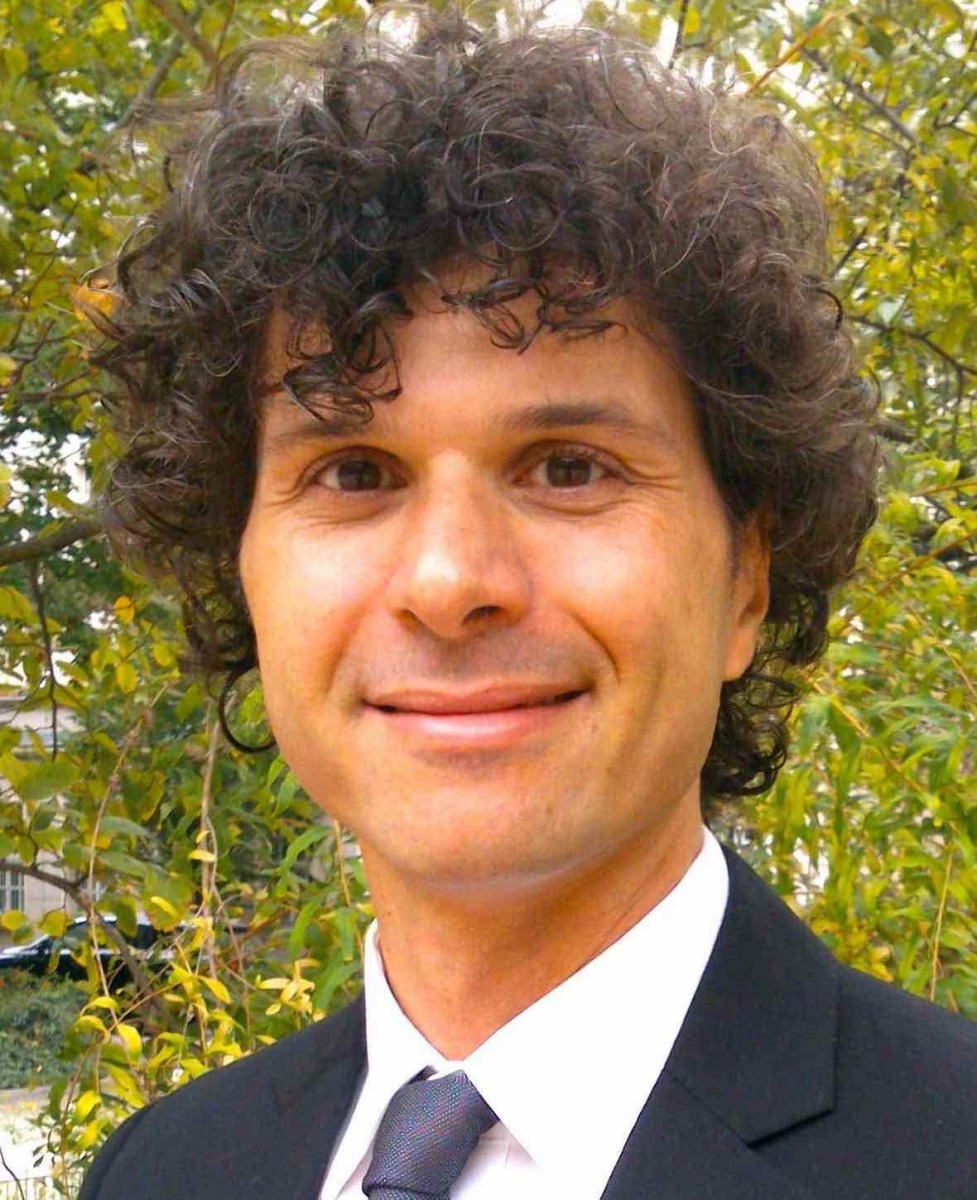 Dr. Francesco Intravaia joined Theoretical Optics & Photonics group as a scientific staff member at the Max Born Institute for Nonlinear Optics and Short-Pulse Spectroscopy in Berlin. Dr. Intravaia's experience spans a broad range of different but complementary arguments. These include decoherence of open quantum systems with few degrees of freedom, plasmonics, atomic physics, and nonequilibrium physics. All topics dovetail within the framework of this project, providing him with a unique set of skills and expertise.
Dr. Francesco Intravaia joined Theoretical Optics & Photonics group as a scientific staff member at the Max Born Institute for Nonlinear Optics and Short-Pulse Spectroscopy in Berlin. Dr. Intravaia's experience spans a broad range of different but complementary arguments. These include decoherence of open quantum systems with few degrees of freedom, plasmonics, atomic physics, and nonequilibrium physics. All topics dovetail within the framework of this project, providing him with a unique set of skills and expertise.
Collaborators
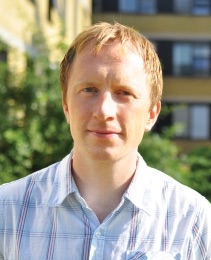 Dr. Philip T. Kristensen is working on a numerical implementation of a module for the numerical calculations of Casimir interaction in the home-made discontinuous Galerking time domain (DGTD) code developed by the Theoretical Optics & Photonics group.
Dr. Philip T. Kristensen is working on a numerical implementation of a module for the numerical calculations of Casimir interaction in the home-made discontinuous Galerking time domain (DGTD) code developed by the Theoretical Optics & Photonics group.
 M.Sc. Daniel Reiche joined the TO&P group in April 2015 as a Master student. He defended his master thesis "Equilibrium and non-equilibrium atom-surface interaction and the influence of spatial dispersion" in October 2016. In April 2017 he became PhD student and is working on the role of material, geometrical and statistical properties in equilibrium and nonequilibrium fluctuation-induced interactions.
M.Sc. Daniel Reiche joined the TO&P group in April 2015 as a Master student. He defended his master thesis "Equilibrium and non-equilibrium atom-surface interaction and the influence of spatial dispersion" in October 2016. In April 2017 he became PhD student and is working on the role of material, geometrical and statistical properties in equilibrium and nonequilibrium fluctuation-induced interactions.
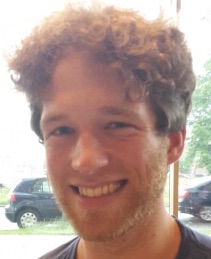 M.Sc. Marty Oelschläger joined the TO&P group in June 2016 as a PhD student and he is working on the theory of fluctuation-induced phenomena in nano-photonic systems.
M.Sc. Marty Oelschläger joined the TO&P group in June 2016 as a PhD student and he is working on the theory of fluctuation-induced phenomena in nano-photonic systems.
 Christoph H. Egerland is a Bachelor student at the Humboldt University of Berlin and in April 2017 he joined the TO&P to work on his Bachelor thesis on the Casimir effect in graphene systems.
Christoph H. Egerland is a Bachelor student at the Humboldt University of Berlin and in April 2017 he joined the TO&P to work on his Bachelor thesis on the Casimir effect in graphene systems.
Former collaborators
Dr. Julia F. M. Werra wrote her PhD thesis within the TO&P group. She defended her work on "Probing plasmonic nanostructures: A theoretical study of light-matter interaction in graphene-based and metallic systems" in October 2016 and collaborated with the main scientists on the topic of fluctuation-induced interactions involving graphene and metallic systems.
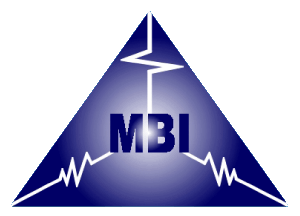
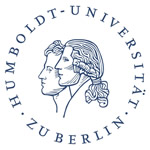
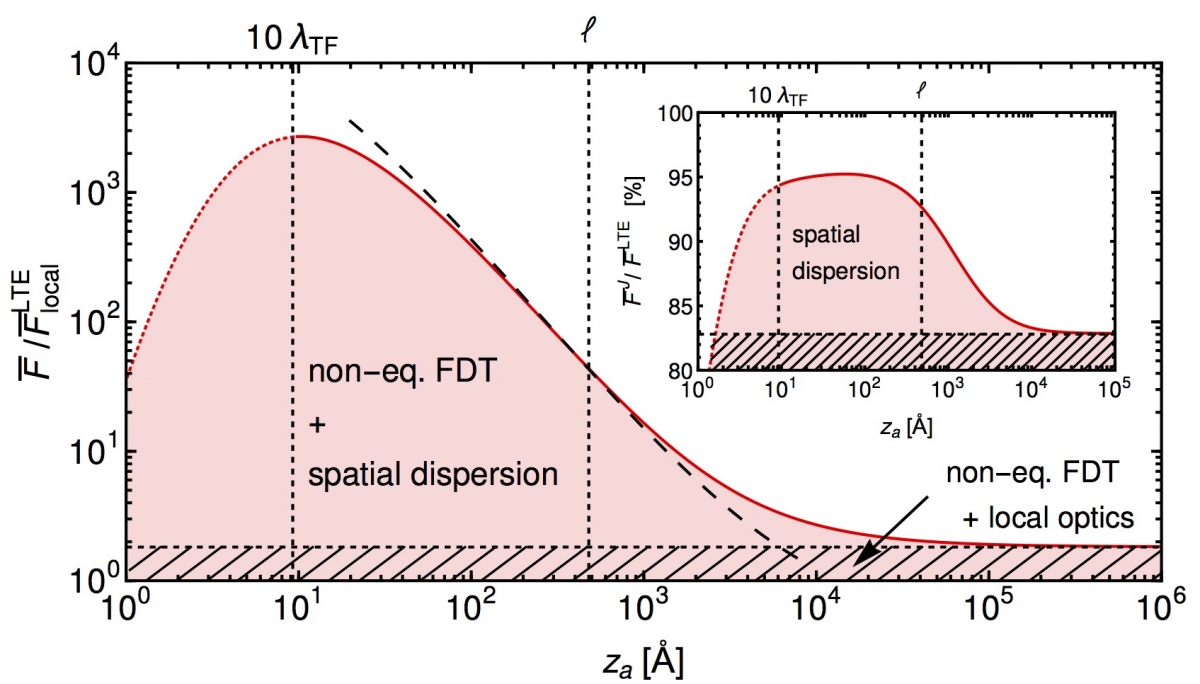 Daniel's paper on Spatial dispersion in atom-surface quantum friction has been accepted for publication in Physical Review B. Congratulations Daniel!
Daniel's paper on Spatial dispersion in atom-surface quantum friction has been accepted for publication in Physical Review B. Congratulations Daniel! Prof. Ferdinand Schmidt-Kaler
Prof. Ferdinand Schmidt-Kaler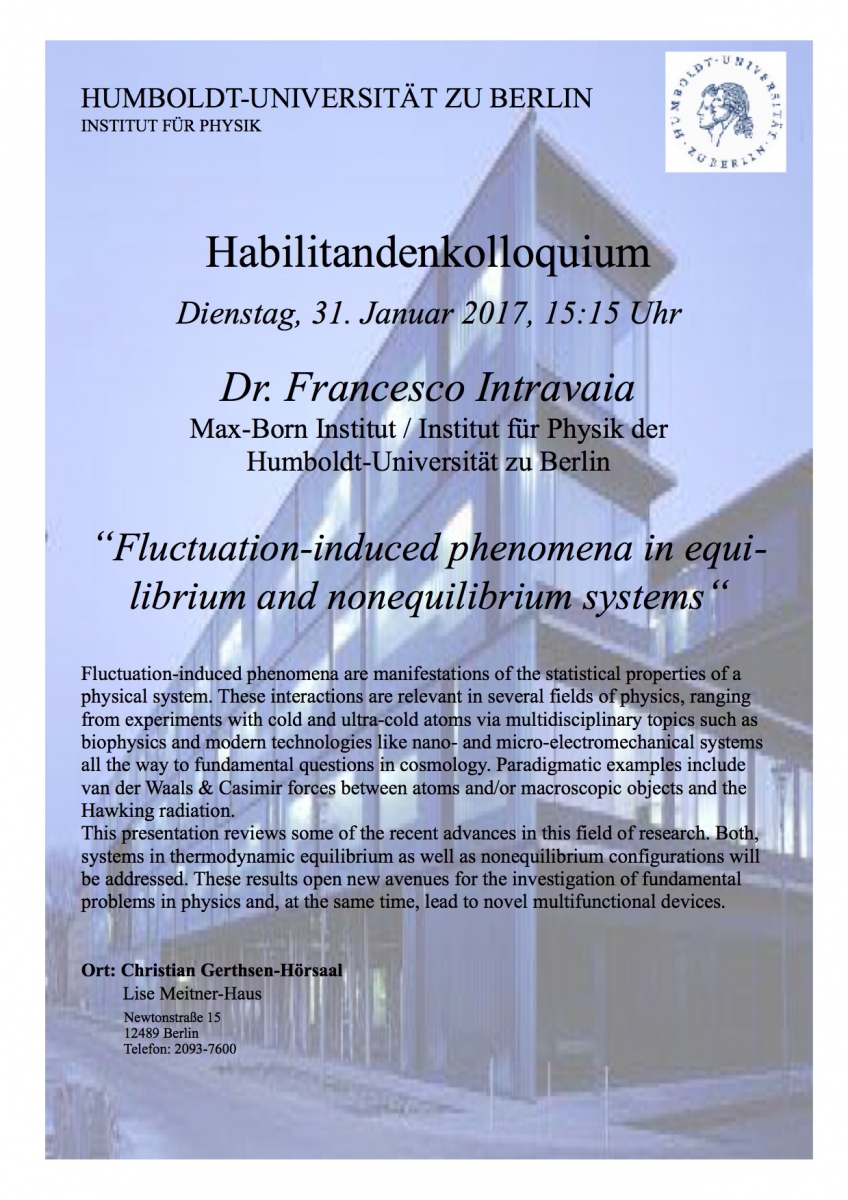 Francesco officially started the procedure for getting his habilitation degree. On January 31st he gave the colloquium
Francesco officially started the procedure for getting his habilitation degree. On January 31st he gave the colloquium  The second funding period of the INPhAS project was characterized by a relevant outcome on the validity of the local thermal equilibrium approximation in fluctuation-induced interactions. Despite this approximation has been widely used to describe several nonequilibrium systems, it drastically fails in quantum friction. This major result was reported by several scientific outlets and the highlight “
The second funding period of the INPhAS project was characterized by a relevant outcome on the validity of the local thermal equilibrium approximation in fluctuation-induced interactions. Despite this approximation has been widely used to describe several nonequilibrium systems, it drastically fails in quantum friction. This major result was reported by several scientific outlets and the highlight “
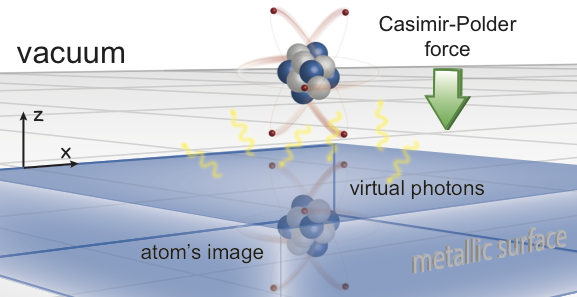 The paper "Non-Markovianity in atom-surface dispersion forces" has been published on Physical Review A.
The paper "Non-Markovianity in atom-surface dispersion forces" has been published on Physical Review A.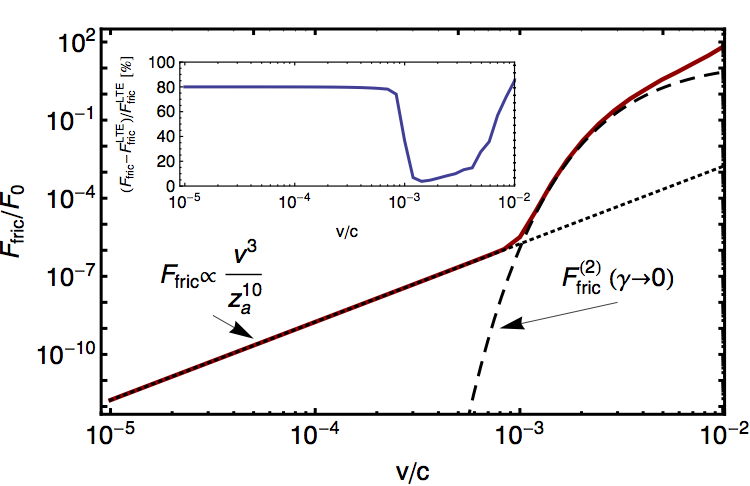 The paper "Failure of Local Thermal Equilibrium in Quantum Friction" has been published on Physical Review Letters.
The paper "Failure of Local Thermal Equilibrium in Quantum Friction" has been published on Physical Review Letters. Prof. Ulf Leonhardt
Prof. Ulf Leonhardt Daniel was awarded with a fellowship in the framework of PROMOS program funded by the DAAD. Congratulations!
Daniel was awarded with a fellowship in the framework of PROMOS program funded by the DAAD. Congratulations! 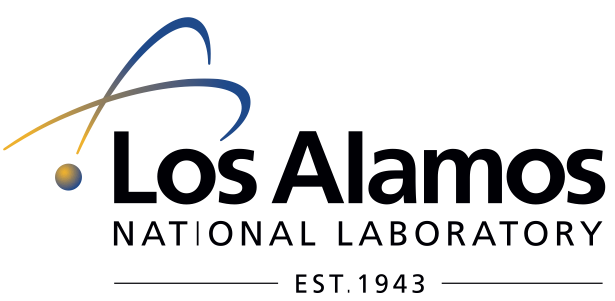
 Prof. Dirk Bouwmeester
Prof. Dirk Bouwmeester 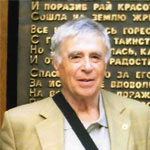 Prof. Lev Pitaevskii
Prof. Lev Pitaevskii